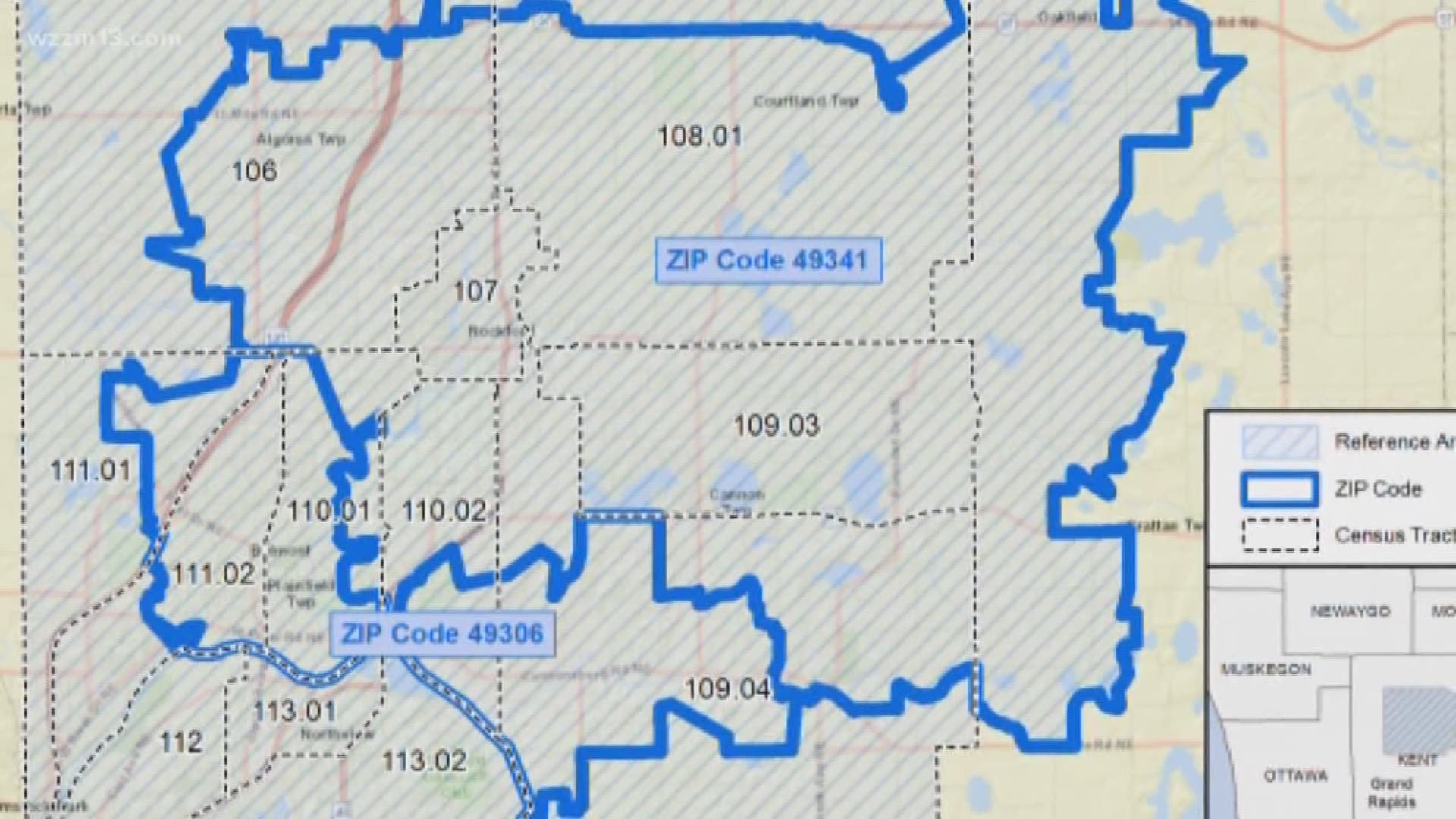GRAND RAPIDS, Mich. -- Two ZIP codes near a PFAS-laden dumpsite in northern Kent County saw elevated rates of prostate cancer over a 15-year period, state and local health officials announced Tuesday, Aug. 14.
The Michigan Department of Health and Human Services and Kent County Health Department released the results of a cancer study of people living near Wolverine Worldwide’s old House Street dump in Belmont. The Rockford-based shoemaker discarded waste containing PFAS chemicals at the property and other nearby locations, contaminating more than 700 private wells.
The report found “no consistent elevation in cancer incidences" except for prostate cancer in ZIP codes 49341 and 49306 and 12 census tracts between 2000 and 2014. Officials could not link the high prostate cancer numbers to PFAS exposure.
“This is simply looking at data and has no other level of analysis to it other than trying to compare the two ZIP codes’ data to the state of Michigan’s data,” said Dr. Eden Wells, chief medical executive at MDHHS.
Officials said the results are step one of a multi-faceted health analysis of the industrial chemicals’ effects on northern Kent County residents.
“We recognize that this is incomplete and insufficient by itself,” said Adam London, a health officer at KCHD. “And that’s why we all remain committed to continuing this investigation.”
The next step is an “exposure assessment” consisting of blood samples and specified health questions for residents, said Kory Groetsch, environmental public health director at MDHHS. This fall, the state plans to draw blood from around 800 residents with contaminated wells both above and below the U.S. EPA’s lifetime safe drinking limit for PFAS of 70 parts per trillion.
“There’s not a value [of testing blood] from a diagnostic sense of your health,” Groetsch said. “But what it will contribute to, and the way they’re being designed, is to contribute to the broader understanding of science and the community.”
The state is conducting the exposure assessment while consulting with the Centers for Disease Control and Prevention’s Agency for Toxic Substances and Diseases Registry in the hopes that the agency will include Kent County in a nationwide PFAS health study its planning for eight other locations.
This next step will have an approach similar to a study in West Virginia, known as C8, which examined health effects of PFAS chemicals from a population-level.
“From a population perspective, we could look at the profile of illness in this area and the exposures they had,” London said. “And that can lead to further research elsewhere and build the body of knowledge around PFAS.”
Varnum Law, which represents more than 400 people in 171 lawsuits against Wolverine, said the firm's request for Wolverine and health officials to test the blood of people living in the contamination zones was denied almost a year ago.
“We went ahead and tested close to 100 people and found high blood levels, some of which were higher than those expected from workers in a PFAS manufacturing plant,” said attorney Paul Albarran. “While our position has been vindicated, we are disappointed that nearly an entire year was wasted by Wolverine’s stubbornness.”
Wolverine responded to the results, emphasizing the inability to link elevated prostate cancer to PFAS exposure.
“The lack of definite results presented today underscores how complicated these issues continue to be,” the company said in a statement. “As MDHHS notes, the ability to draw any more specific conclusions is constrained by the limitations of the study.”
Groetsch said the study will cost around $1 million. The state will fund the project, but environmental regulators may be able to recover the response costs from Wolverine.
The cancer data will help shape the hypotheses heading into the next phase of the investigation, Wells said.
“We want to at least have an idea of what the general health and wellbeing of our community is, regardless, before we’re stepping in and doing an exposure assessment,” she said. “So this is one little piece of what will become a very large picture.”
►Make it easy to keep up to date with more stories like this. Download the 13 ON YOUR SIDE app now.
Have a news tip? Email news@wzzm13.com, visit our Facebook page or Twitter.

